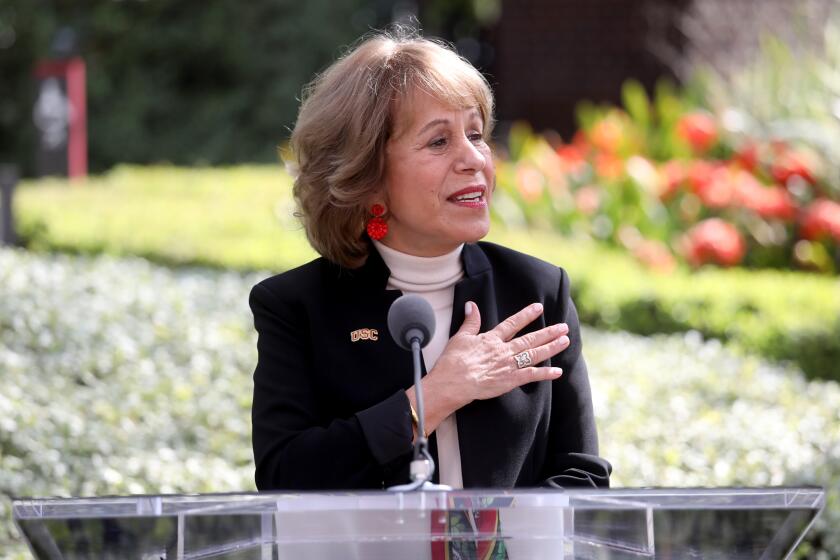School Accreditation Demands Keep Educators on Their Toes
If you have a child in public school, you probably take for granted that teachers use reasonable methods to teach reasonable curricula, and that grades earned at the school are valid in the eyes of colleges and universities.
You may be surprised, then, to learn that all California public schools must go through an accreditation process every few years in which they must prove that they are legitimate.
Two agencies are involved in the accreditation process: The Western Association of Schools and Colleges, and the California Department of Education. They jointly administer a fairly new process of self-evaluation called “WASC” in academic circles.
My school is one of many around Los Angeles County that recently “got WASCed.”
The accreditation process has three basic steps: self-study, verification by a visiting committee and follow-up. It often takes a year or more to complete. The process now relies more heavily on self-evaluation by the school than it did a few years ago. Although this may appear to invite abuses--after all, what school wouldn’t choose the highest rating when given the chance?--the truth is that a lot of documentation is required to back all positive and negative claims by a school.
Each campus must compile a “Self-Study Report” that is painfully detailed. My school’s recent edition ran more than 225 pages.
First, the school must have a philosophy, and some goals and objectives that are known and reviewed occasionally by the staff, students, administration and community.
Next, organization must be reflected in a structure of authority that clearly defines staff members’ functions, limitations and responsibilities.
Student support services, such as health care, counseling and transportation, must meet state standards.
Most important in many educators’ minds is the curriculum, and it gets extensive scrutiny.
An accredited curricular program must include written course descriptions and goals, offer students adequate instructional materials such as textbooks or microscopes, and be reviewed periodically by the staff, students, administrators, parents and community members.
The school’s staff largely determines the quality of instruction and support services, so they’re looked at seriously as well. Each must be trained in an appropriate field.
Safety is obviously important, so schools cannot be accredited unless their buildings are structurally sound and versatile enough to house the school’s changing programs.
Finances are also scrutinized. There has to be money to cover the staff paychecks, physical facilities and teaching materials needed to carry out the school’s curriculum and other goals.
Based on a school’s ability to meet these criteria, it may be accredited for up to six years. In theory, accreditation could be denied if severe deficiencies are found, but this is virtually unheard of. In reality, a school with major problems is accredited for just one or two years, and sternly warned to clean up its act--and the warning generally works. Evaluating an entire school is just as big a task as it sounds. So the staff forms committees that tackle smaller, more manageable chunks of the job.
Each academic department becomes a committee that is responsible for describing and evaluating its own content, teaching strategies and materials, and success as reflected in students’ performance and comments.
Each department gets a rounded picture by analyzing standardized test scores, and surveying students and teachers about what goes on in their classrooms.
Separate committees are also formed to examine programs such as student government, the career center or health services.
Each committee then composes a summary, usually several paragraphs long. It must mention at least three strengths (such as “70% of students surveyed rated their English classes as excellent or good”) and three areas for improvement (such as “government class should be increased to one year of instruction”).
An “Action Plan,” with specific steps for improvement, is also required.
This summary then becomes a single chapter in the school’s Self-Study Report.
Now it’s time for the state to verify that the school actually does all that it claims to.
Astate-appointed Visiting Committee typically spends 3 1/2 days on a campus. Members generally come from neighboring school districts. Among our school’s eight visitors, for example, were a principal, teacher, student, counselor and district office employee.
They usually observe classes, talk to staff and students, and tour the facilities. Based on that, they offer more suggestions for improvement and makes sure the Action Plans are feasible.
Then they decide whether to grant accreditation, and for how many years.
Even if a school wins the six-year term, it isn’t off the hook.
As part of the follow-up phase, the school must form yet another committee, which drafts a schoolwide Action Plan of long- and short-range goals.
Progress toward each goal is measured every year and published in an annual report.
Nor is there time to relax when those goals are finally met--since it seems that the next WASC deadline is always just around the corner.
More to Read
Start your day right
Sign up for Essential California for news, features and recommendations from the L.A. Times and beyond in your inbox six days a week.
You may occasionally receive promotional content from the Los Angeles Times.






